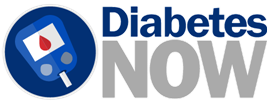Premier - Local Pharmacist
-
Insulin Pen
An insulin pen is a device for giving insulin shots. It looks like a pen. Inside the pen is a needle and a cartridge filled with insulin.
-
How to use an insulin pen with innovative needle technology
Proper hand hygiene and equipment preparation are crucial for safe injection techniques. Here's a step-by-step guide to continue with the demonstration:
The guidelines you mentioned regarding the use of insulin pens are generally good practices to ensure proper medication administration and patient safety. Let's go through them one by one:









